Homemade Le Chevre Frais or Neufchatel Cheese

This cheese is easy to make and works well with homogenized store bought milk. When you make it with goat milk it is called Le Chevre Frais, if you make it with cow milk it is called Neufchatel Cheese. It is a fresh, soft cheese that is spreadable. It contains starter culture, doesn’t need aging, and can develop a nice flavor within days. It can be frozen or vacuum packed if you can’t use it up within a week.
Any milk works for this recipe. If you use homogenized milk, the cheese will take longer to drain than with non homo milk, but it will have a creamier taste.
For a more detailed explanation about how to make cheese at home, please read our How to Make Cheese at Home post. You can also find some fun recipes using cheese HERE to try out your homemade Le Chevre Frais or Neufchatel Cheese.
For supplies needed and where to find them, you can visit my Cheese Making Kit review page where I share my opinions and experience using different products and tools.
Enjoy!!!
Ingredients:
- 4 cups (1 L/1 qrt) Pasteurized and Homogenized (or non homo) milk
- 2 Tbsp of Buttermilk with active bacteria or ¼ tsp freeze dried starter. You can buy cheese culture here.
- 1 drop of liquid rennet or a rice grain size piece of dried rennet dissolved in ⅛ cup of cold water. You can order rennet here.
- 1 tsp of salt (or to your taste)
Utensils needed:
- Pot to comfortably hold the milk
- Pasta strainer
- Cheesecloth
Procedure:
- Pour your milk into the pot and heat it to 25C/77F, stir well and add half a cup of buttermilk, or ¼ tsp of freeze dried starter culture. Don’t use Yogurt as a starter, it won’t work well with this recipe.
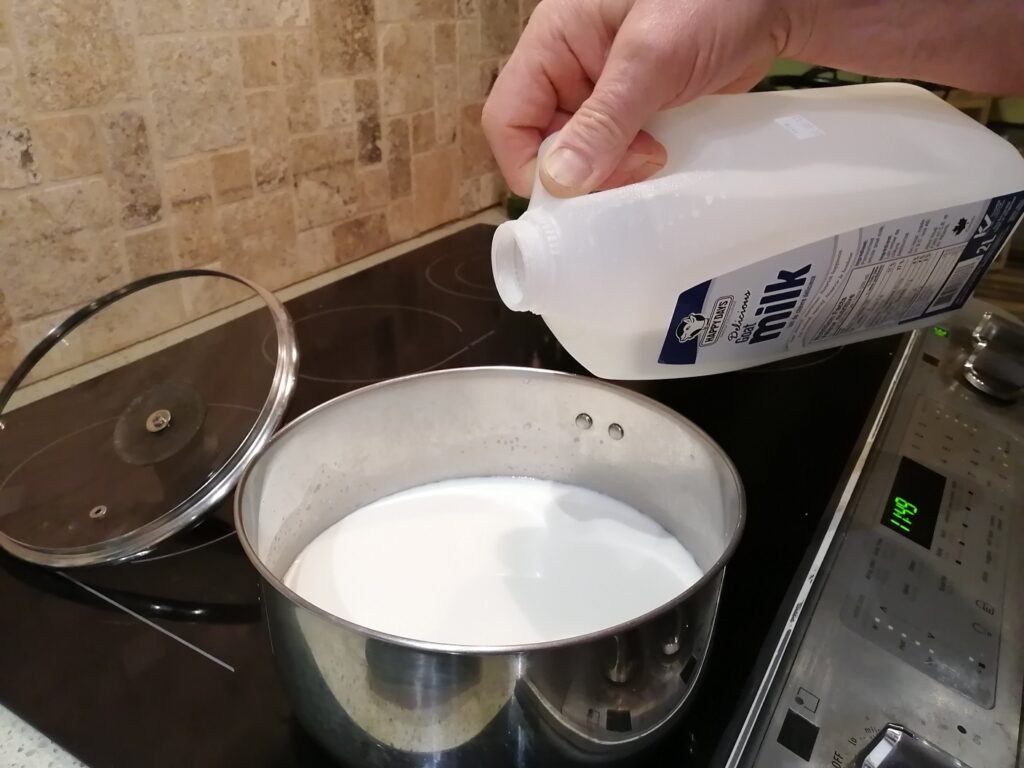
Getting goat milk ready to make chevre
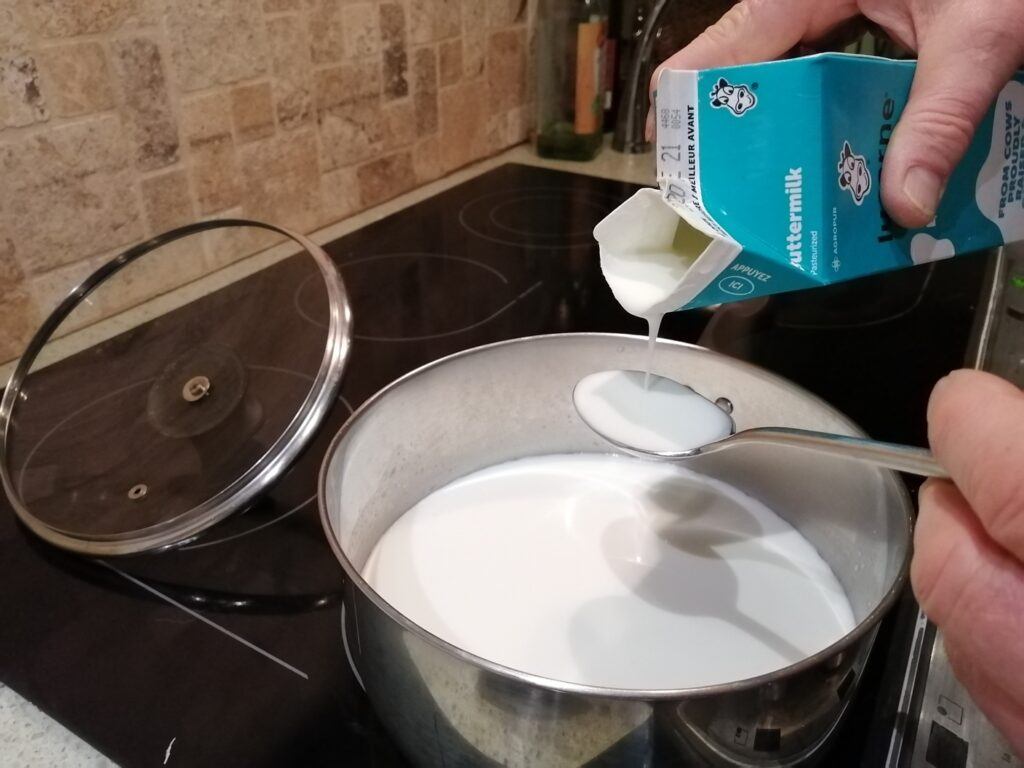
Adding active buttermilk to the lukewarm milk.
- Take the pot off the stove. Prepare half a cup of lukewarm water and add a tiny bit of rennet. If you use liquid rennet, use 1 drop. If you use rennet tablets, break off a rice grain size piece and dissolve in cold water, then stir it into the milk and cover the pot to keep the temperature. Room temperature is fine.
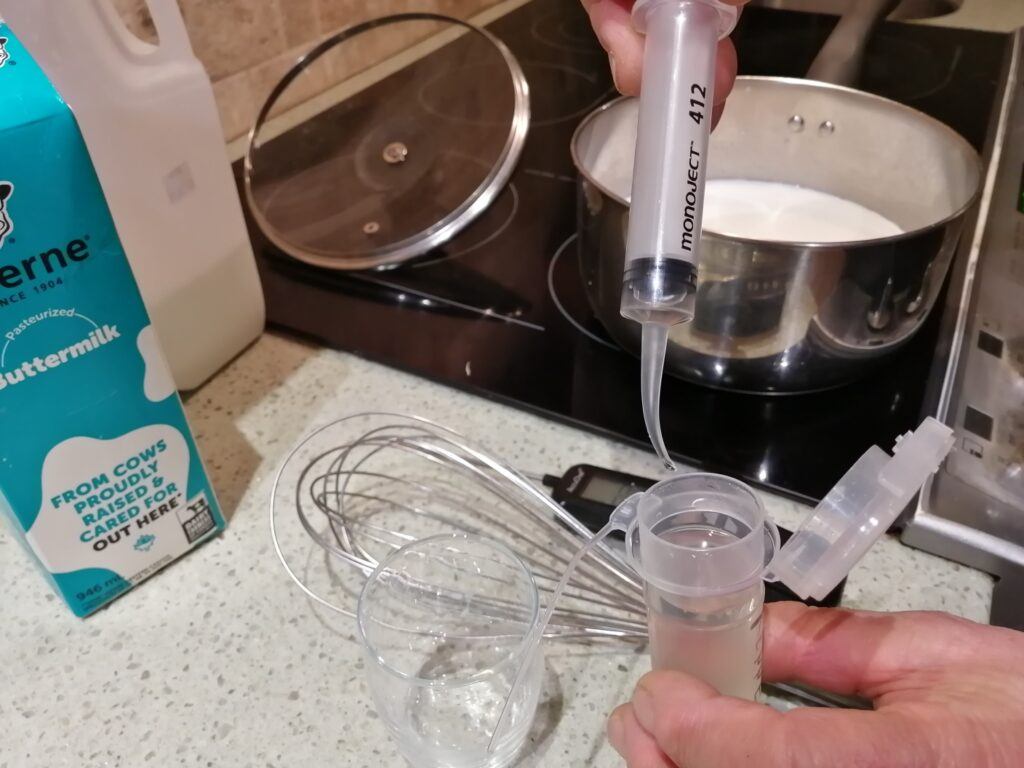
Adding just two drops of Rennet
- It will take the starter anywhere from 10 to 20 hours to acidify the milk. It’s better to wait a little longer than not long enough. I would suggest starting in the morning, and letting the milk, with the buttermilk and rennet in it, sit until the next morning.
- The next morning the milk should have coagulated. Cow and sheep milk will make a much firmer coagulant than goat milk. It is important to taste it. It has to be sour, like yogurt, you have to pick up the sourness in your mouth. If this is not the case, your starter culture was not active enough.
- Now prepare your cheesecloth. Best is to place a pasta strainer into the sink and drape it with the cheese cloth. Then pour the coagulated and soured milk into your cheesecloth.
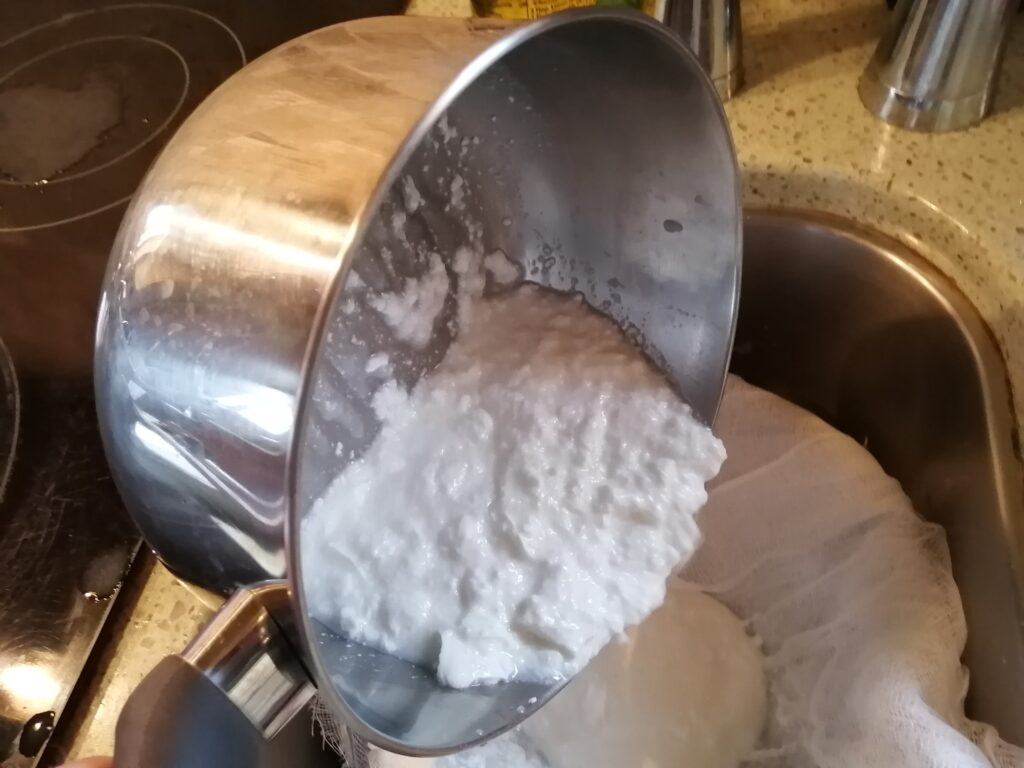
The milk has curdled and is ready to be drained.
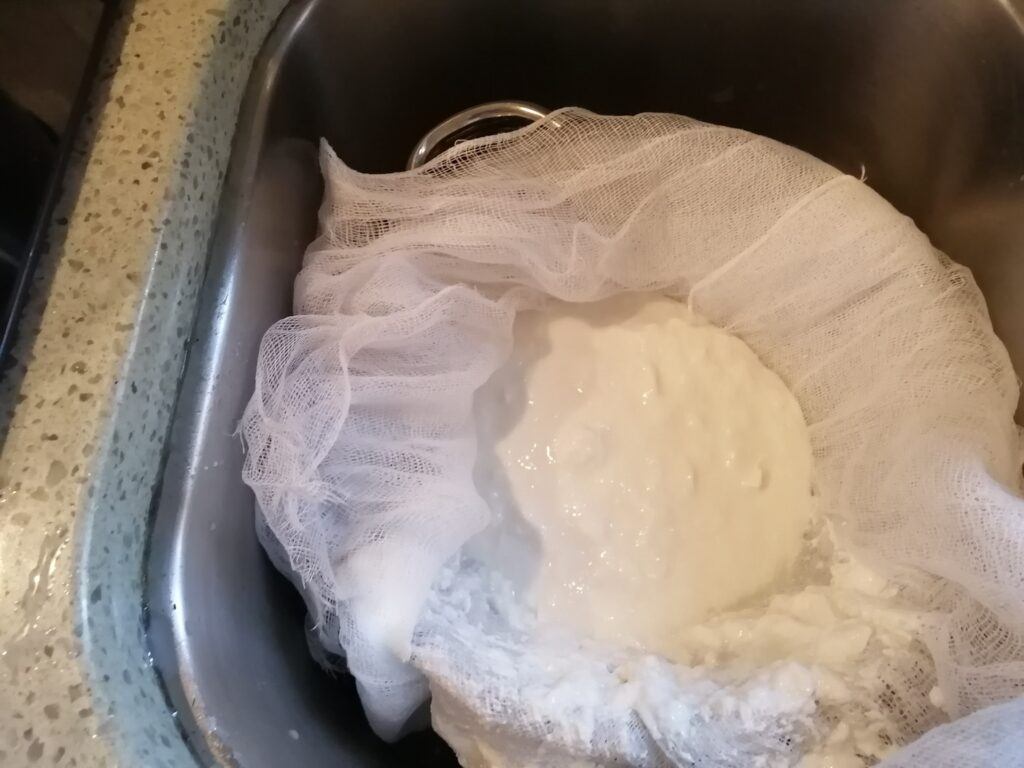
The chevre curd is draining in the cheese cloth.
- The draining will take up to 24 hours, depending if you used homo or non homo milk. Once the cheese has drained for a few hours you can speed up the draining by pressing the cheesecloth. Place a cutting board on it and put weight on it, like a water bottle.
- Once the cheese has drained to the texture of cream cheese, take it out of the cheesecloth and weigh it on a kitchen scale. Then add 1% salt to it. As an example: if the cheese was 440g/1lb, then add 4 g/0.2oz. You can also salt it to your own taste.
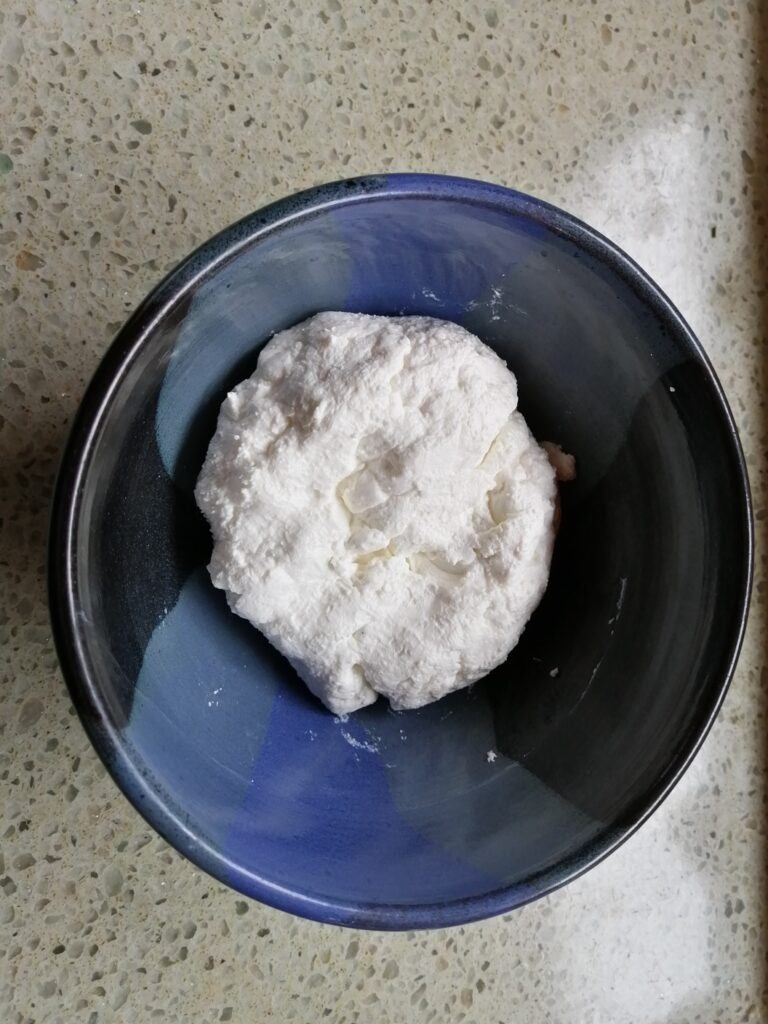
This chevre is ready to consume
This is an extremely versatile cheese. You can make cheesecake with it, use it with crackers, mix it with any spice or sweets like honey. It is great in salad dressings, crumbled over salads, or melted on top of veggies or ham toast.
Troubleshoot
- After pouring the chevre into the cheesecloth it doesn’t drain, even though it made a firm curd. In that case your curd never acidified enough. Reasons for that are that either your culture wasn’t active, your milk was too cold or you didn’t wait 24 hours before draining it. Make sure your milk stays at room temperature. Cover the pot, or place it beside a heater. If you did all that, then it must be your culture. If you used buttermilk, get a fresh bottle with a good expiry date on it, or buy a cheese starter.
- The curd turned sour, but never coagulated. That can happen when your rennet is not active anymore. In this case, you can try to pour the curd into the cheesecloth. If you are lucky you will retrieve some of the curds, but most of it will run through the cloth. Your rennet can lose activity if it is too old, or when it is mixed with chlorinated water.
Are these instructions helpful? Please let me know how your cheese making is progressing.
Enjoy!!!



